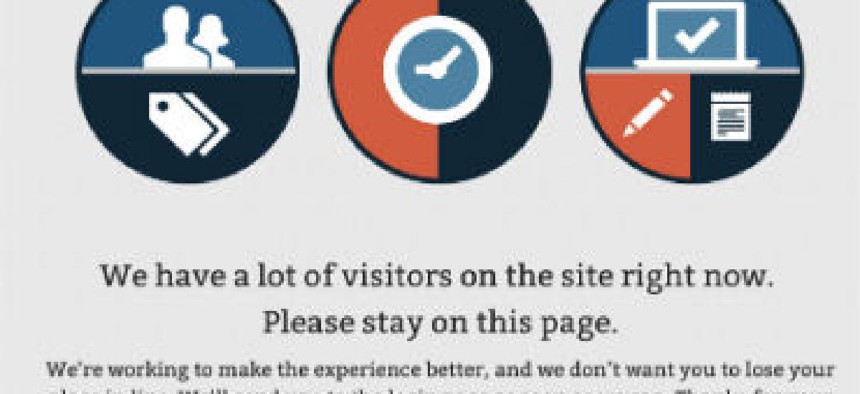Who's helping (and who's not) on the 'tech surge'

CMS identifies "emblematic" private-sector contributors and clarifies team structures, as Issa presses tech firms for assistance details.

Dozens of software engineers, developers and other computer systems experts from the private sector and inside government have joined contractors as part of the "tech surge" aimed at fixing the troubled HealthCare.gov website. But two people who have not been deeply involved are the CIO and CTO at the Department of Health and Human Services.
While the Centers for Medicare and Medicaid Services (CMS) is not providing an exact number, in part because of the way developers are moving in and out of the project as their expertise is required, the agency did release information on two individuals from the private sector who are playing significant roles.
Michael Dickerson is a site reliability engineer on leave from Google who is working with general contractor Quality Software Services Inc. to help stabilize the site and improve its reliability and performance. And developer Greg Gershman, a former presidential innovation fellow now with smartphone application maker Mobomo, is working with CGI Federal to implement an agile development style in making improvements to the site. CGI Federal is responsible for a number of the trouble spots in HealthCare.gov, including the account creation system, insurance enrollment, the insurance plan comparison software, and the method for delivering enrollment forms, called 834s in the industry, to insurance carriers. The two are "emblematic of those who have the skills and expertise," to fix HealthCare.gov, CMS spokeswoman Julie Bataille said on an Oct. 31 call with reporters.
Additionally, Jeff Zients -- the former Office of Management and Budget official and health care entrepreneur tapped to manage the surge -- on Nov. 1 announced updates to the management structure of the Healthcare.gov effort. There are four teams in place working concurrently addressing application and software; infrastructure and hardware; security; and troubleshooting system performance.
The hardware team is in the midst of upgrading failed network hardware that, along with the Oct. 27 Verizon Terremark outage, contributed to significant down time during the past week. Zients reported that response times for user requests had improved by 80 percent over the creaky launch period.
It's not just the press who are interested in the surge efforts and the personnel being tapped from the private sector. Rep. Darrell Issa (R-Calif.), chairman of the House Oversight and Government Reform Committee, has sent letters to private sector firms including Microsoft, Amazon, Kayak, Verizon and others, asking if the companies had sought to assist, or had been asked for help in HealthCare.gov triage and repairs.
Documents returned to the committee and obtained by FCW reveal that Frank DiGiammarino, a former advisor to Vice President Joe Biden and currently director for global public sector at Amazon Web Services had asked HHS CIO Frank Baitman and HHS CTO Bryan Sivak if there was a role for Amazon in fixing HealthCare.gov.
The responses indicate that the CIO office at HHS had little visibility in the HealthCare.gov effort.
"Thanks for the offer! Unfortunately, as you know, I haven't been involved with healthcare.gov. I'm still trying to figure out how I can help, and may very well reach out for assistance should the opportunity present itself," Baitman wrote to DiGiammarino on Oct. 7.
"I actually wish there was something I could do to help," Sivak wrote the following day. (Italics his).
Issa issued a subpoena Oct. 31 for documents from HHS Secretary Kathleen Sebelius for documents related to the launch of HealthCare.gov.
"The evidence is mounting that the website did not go through proper testing, including critical security testing, and that the Administration ignored repeated warnings from contractors about ongoing problems," Issa said in a statement.
Issa also published three documents from the Center for Consumer Information and Insurance Oversight at CMS that are said to be meeting notes from the second and third days of the open enrollment period under the Affordable Care Act. The notes suggest that just six users of Healthcare.gov enrolled in private insurance plans on the site's Oct. 1 launch date, and there were 248 enrollments by Oct. 3.
According to CMS, the site has recovered from outages caused in part by a problem at cloud hosting service Verizon Terremark. CMS is planning upgrades to its own physical infrastructure and to software to improve stability over the next couple days, and is also testing new software releases. Typically, the site is patched between 1 a.m. and 5 a.m. EST, so users might notice disruptions during those hours as work progresses toward the Nov. 30 deadline for repairs.






